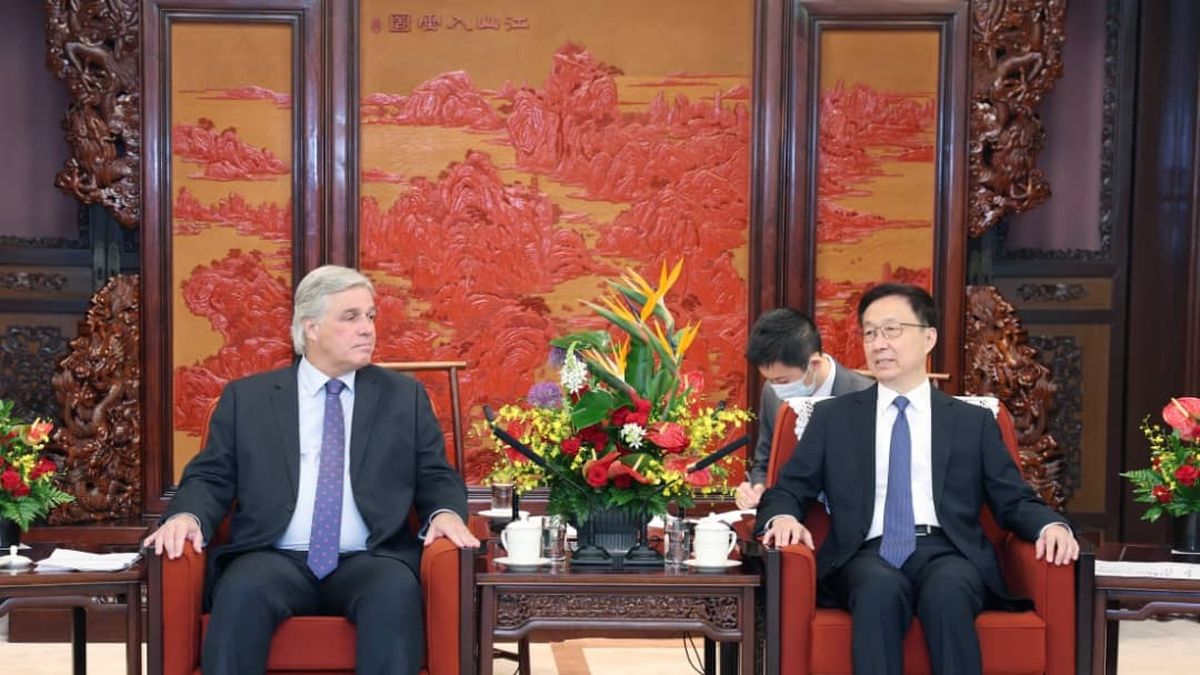The vicissitudes of the government of Uruguay in search of a Free Trade Agreement (FTA) with China reached one of the most important international media, the New York Timesas an example of how the geopolitical scenario can be a factor of great complexity —and even an obstacle— in the international trade of small countries.
“The enthusiasm that prevails in this South American country has more recently given way to the resignation that a trade deal with China is unlikely any time soon. What seemed like a new opportunity for Uruguay has turned into a cautionary tale about the trade policy pitfalls for small nations who are facing complex geopolitical realignments. This is how the New York Times defines the situation that Uruguay is going through regarding the negotiations with the Asian giant.
The talks between the two countries, mostly driven by the administration of the president Luis Lacalle Pouare at an impasse, caught between China’s intentions to negotiate with the Mercosur, the priority of Brazil to reach an agreement with the European Union before advancing with other fronts, and the Uruguayan desire to have sufficient geographical and economic weight to be considered a relevant actor in itself —and not in the context of the regional bloc that he has denied so much in recent months.
China is currently the Uruguay’s main buyer, especially beef, one of the country’s most important export products. However, placements in the Asian country face tariffs of 12%more than double the rate applied to the meat of Australia —the largest exporter of meat to the Chinese nation—, while New Zealand, the second largest exporter to that country, has duty-free access.
This scenario, along with the quest to “redraw the terms of engagement with the rest of the world, while separating the nation from the legacy of trade protectionism that has prevailed in the largest economies of South America”, were the reasons why, according to the New York Times, Lacalle Pou bet “his economic legacy”. The advances were auspicious at first, but the government’s enthusiasm for the minimal achievements has long since seemed to be a facade to cover up what was annoying and now it is nothing more than resignation for the future of the FTA.
The fight with (and for) Mercosur
Meanwhile, “Uruguay’s aspirations provoked anger and accusations in neighboring Brazil and Argentina”. This belligerent climate improved after China itself claimed to seek harmony between regional partners —subjecting the bilateral agreement with Uruguay to a collective bargaining with Mercosur and, above all, with Brazil.
“Any interest the Chinese government had in reaching an agreement with Uruguay soon gave way to its focus on Brazil, a calculation based on basic arithmetic: Uruguay is a country of 3.4 million people, while Brazil is the largest economy. of South America and is home to 214 million”, says the New York Times, in this regard.
But the newspaper from the United States also points out the difficulties that this agreement with Mercosur implies: in addition to the slowness of the regional bloc —it gives the example of 20 years of negotiations with the European Union— is added the fact that Paraguayan, one of the members of the block, has no relationship with Beijing but with Taiwan. Meanwhile, the Brazilian president, Luiz Inacio Lula da Silva It was clear that his priority is the agreement with the European continent, and that only then will he pay attention to the Asian countries.
In this way, Uruguay seems to be harming the relationship with its regional partners without prospects of economic advantages in the medium term and, perhaps, not even in the long term.
Source: Ambito




